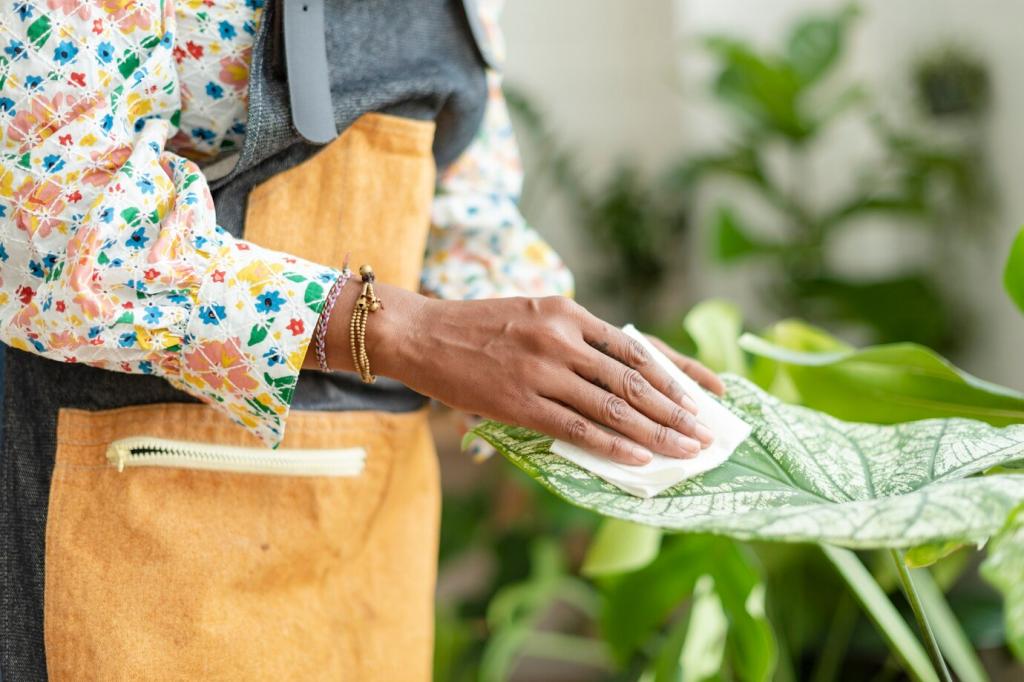Why Dust Clings—and How to Lift It Without Chemicals
High-quality microfiber has ultra-fine, split strands that create a vast surface area, grabbing dust through mechanical and electrostatic attraction. Fold your cloth into quarters, use fresh sides as you go, and wash without fabric softeners so the fibers keep their grab-and-hold power.
Why Dust Clings—and How to Lift It Without Chemicals
A barely damp pass reduces static that makes dust skitter across glossy surfaces. Wipe with the grain on wood, and move from edges toward the center on glass. No sprays needed—just patience, consistent strokes, and a gentle hand that respects delicate finishes.
Why Dust Clings—and How to Lift It Without Chemicals
My neighbor swore nothing worked on her antique oak table until she switched to a soft microfiber, one light damp pass, then a dry buff. The dust stopped resettling, and the finish looked calm, not cloudy. She now dusts in minutes, not frustration.



